Follow Us:

Share
When you think about modern military vehicles, one name that often comes up is the Bradley Fighting Vehicle. Whether you’re familiar with military vehicles or not, the Bradley IFV stands out as a key player in infantry support.
In this article, we’ll take an in-depth look at the Bradley Fighting Vehicle, explore its history, features, role in modern warfare, and even discuss its future.
But, what exactly is the Bradley Fighting Vehicle? And why does it continue to play such an important role in the U.S. Army? Let’s dive in and explore the M2 Bradley, its variants like the M3 Bradley, and how it stands up against other vehicles in the military arsenal.
At its core, the Bradley Fighting Vehicle (BFV) is an infantry fighting vehicle (IFV) designed to transport infantry into combat, provide fire support, and protect soldiers during missions. The M2 Bradley IFV is one of the most well-known variants and has been the backbone of the U.S. Army for decades.
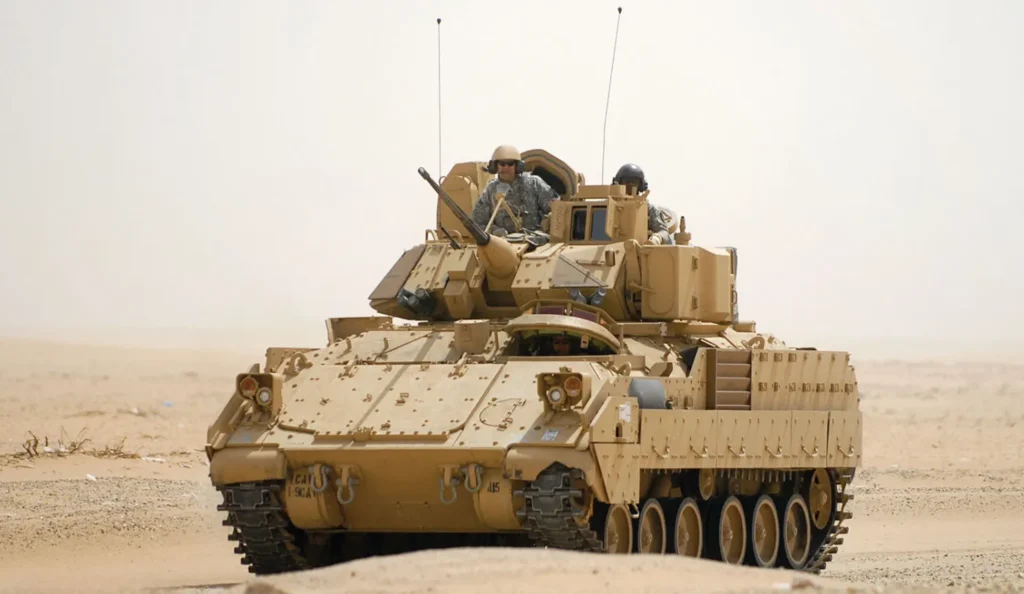
The Bradley Infantry Fighting Vehicle (IFV) is often compared to other military vehicles, like tanks, but it serves a different role. Unlike the heavy, heavily armored tank, which is designed for frontline combat, the Bradley vehicle is meant to transport infantry while offering adequate protection and firepower. This makes it a crucial asset in both offensive and defensive operations.
The need for a modern infantry fighting vehicle arose in the early 1970s, as the U.S. Army sought a replacement for the M113 armored personnel carrier. The M2 Bradley was developed in the 1980s to meet these new requirements for better protection, mobility, and firepower. The Bradley Fighting Vehicle was first introduced in 1981 and entered service in 1983.
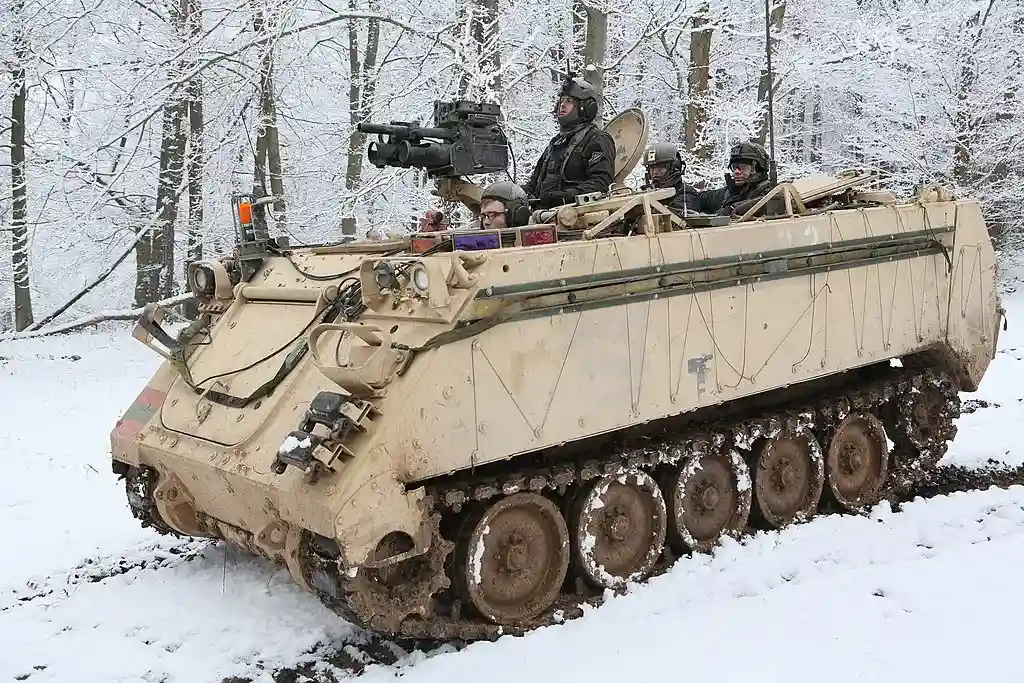
This vehicle was designed to complement the M1 Abrams tank, providing infantry units with a highly mobile and well-protected vehicle to travel alongside armored units, engaging enemies at long range and ensuring infantry could move safely on the battlefield.
The M2 Bradley is often seen as the flagship version of the Bradley Fighting Vehicle. It was designed with a crew of three: a driver, a gunner, and a commander, along with space for six infantry soldiers. One of the main features of the M2 Bradley is its 25mm M242 Bushmaster autocannon, which allows it to engage both infantry and light vehicles from a distance.
While the M2 Bradley serves as an infantry fighting vehicle, the M3 Bradley was designed as a cavalry fighting vehicle (CFV) with a primary focus on reconnaissance. The M3 Bradley fighting vehicle shares many of the same features as the M2 Bradley but is optimized for scouting missions, providing critical intelligence and support for armored units.
The Bradley Fighting Vehicle is a highly capable and versatile platform designed to meet the needs of modern mechanized infantry units. Here’s a closer look at its key Bradley Fighting Vehicle specs to better understand what makes it such an integral part of military operations.
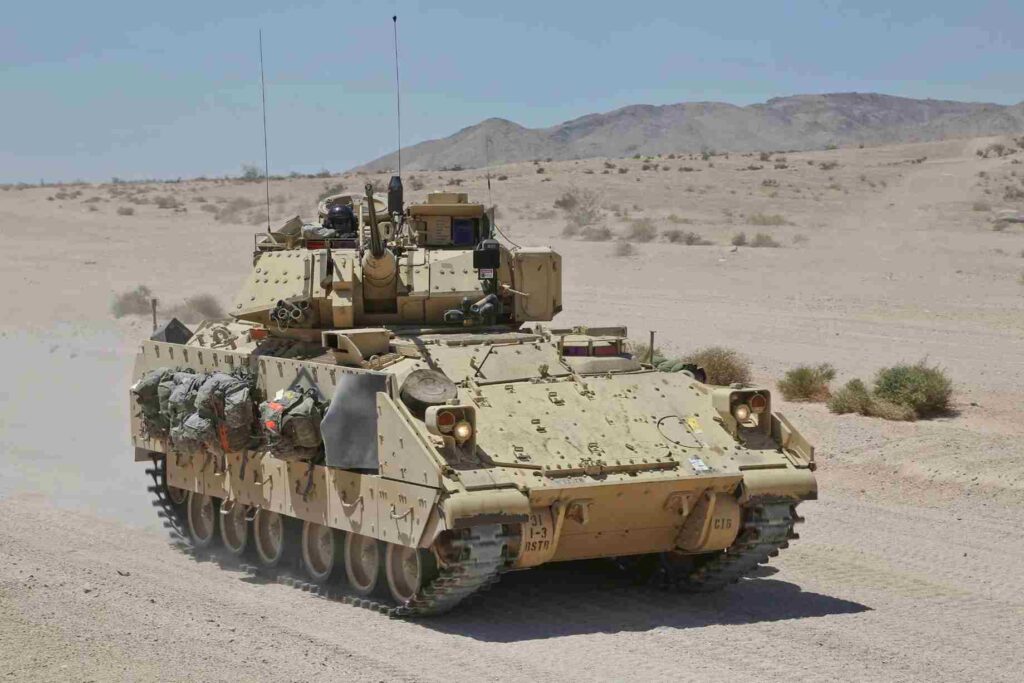
The Bradley Fighting Vehicle weight can vary depending on the specific configuration, such as the inclusion of additional armor or other modifications. The Bradley armored vehicle is heavy, but this is a necessary tradeoff for the level of protection it provides its crew and infantry.
The Bradley’s mobility is a defining feature. Despite its weight, it can reach speeds of up to 40 mph, making it highly maneuverable on the battlefield. The Bradley vehicle is designed to keep pace with tanks and other combat units, providing infantry with quick mobility in combat scenarios.
The Bradley Fighting Vehicle is well-armed, with a range of weaponry designed to provide both anti-armor and anti-infantry capabilities. The M2 Bradley variant is typically equipped with the following:
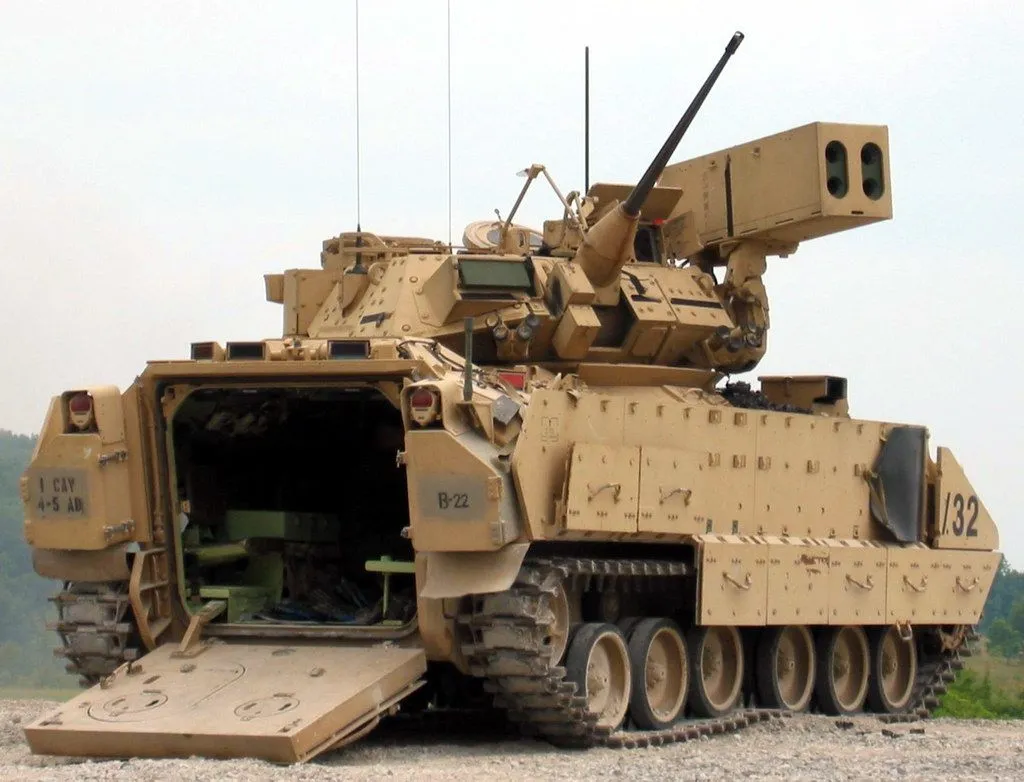
The Bradley Fighting Vehicle’s armament gives it a robust capability to fight both enemy vehicles and infantry, offering a flexible combat solution for infantry units on the move.
The Bradley is heavily armored to protect its crew and infantry from a wide variety of battlefield threats, including small arms fire, shrapnel, and anti-tank weapons. Key features of the Bradley’s armor include:
This mix of armor types ensures that the Bradley Fighting Vehicle can withstand a variety of threats, making it one of the most well-protected vehicles in its class.
The Bradley’s interior is designed to carry not only the crew but also a small squad of infantry. This makes the Bradley IFV ideal for carrying troops to the frontlines while providing them with direct fire support and protection from enemy fire.
The Bradley Fighting Vehicle is equipped with a range of advanced communication and navigation systems to ensure effective coordination on the battlefield:
Inside the Bradley Fighting Vehicle, the focus is on providing a protected and functional space for both the crew and the infantry. Here’s a closer look at what makes the Bradley Fighting Vehicle’s interior stand out:
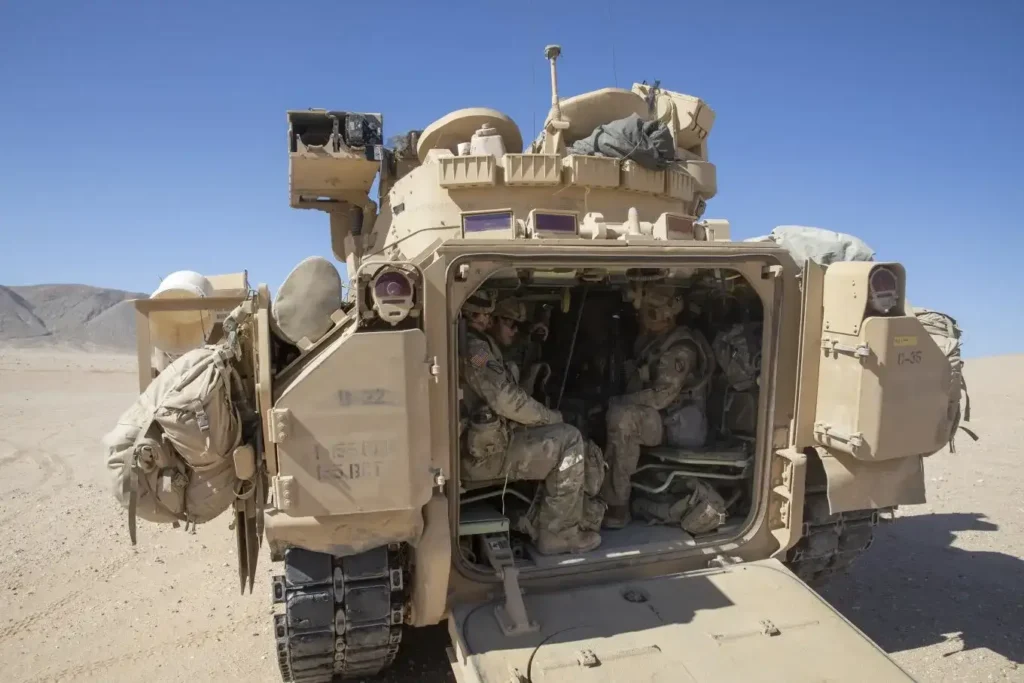
One of the most common questions surrounding the Bradley Fighting Vehicle is how it compares to other military vehicles, particularly tanks and other infantry fighting vehicles. While the Bradley may share some similarities with these machines, it has distinct features that make it stand out in certain combat scenarios.
The Bradley Fighting Vehicle and tanks like the M1 Abrams both play important roles in modern warfare, but they are designed for different purposes.
While the M1 Abrams tank is more powerful in direct combat, the Bradley Fighting Vehicle excels in its ability to provide infantry support, transport troops, and engage targets from a safe distance using its TOW missile system. The Bradley Fighting Vehicle’s smaller size and faster mobility allow it to operate in more diverse environments than a tank, which is often restricted to larger, more open spaces.
The Bradley vs Tank debate ultimately comes down to context. Tanks are ideal for confrontation with heavily armored enemies, while the Bradley is essential for infantry support and versatile operations in various terrains.
Although both the M2 Bradley and M3 Bradley are part of the same family of vehicles, they are designed with different missions in mind.
The M2 Bradley vs M3 Bradley comparison highlights the difference in purpose. While the M2 Bradley is used primarily for transporting infantry, the M3 Bradley is tailored for reconnaissance missions and supporting light cavalry units.
Another useful comparison is between the Bradley Fighting Vehicle and the more traditional Armored Personnel Carrier (APC). The APC’s primary function is to transport troops safely, while the Bradley IFV provides additional offensive capabilities.
The Bradley Fighting Vehicle is a more versatile asset because it combines infantry transport with effective fire support, while traditional APCs are primarily focused on the safe movement of personnel.
The Bradley Fighting Vehicle has been a vital component of the U.S. Army for decades. Its role has evolved over time, but it remains an essential tool for infantry support, reconnaissance, and battlefield mobility.
The Bradley Fighting Vehicle has seen action in several major conflicts, including:
The Bradley Fighting Vehicle’s adaptability to different combat scenarios has cemented its place as a mainstay of U.S. military strategy, capable of fulfilling a variety of roles, from reconnaissance to direct combat support.
One of the important aspects to consider when evaluating the Bradley Fighting Vehicle is the cost and the discussions surrounding its replacement. The Bradley has been in service for more than 40 years, and as with any long-serving military vehicle, there are ongoing discussions about the need for modernization or replacement.
The cost of the Bradley Fighting Vehicle can vary depending on the specific variant and upgrades. However, on average, the price of an M2 Bradley IFV is approximately $4.2 million per unit.
The Bradley Fighting Vehicle cost can fluctuate based on the contract terms and any additional modifications made during the manufacturing process. For example, a new Bradley fitted with the latest technology and armor enhancements will typically be more expensive than a standard model.
The cost of maintaining the Bradley Fighting Vehicle over its lifetime is also significant. The Bradley Fighting Vehicle System Maintainer is tasked with ensuring that these vehicles remain operational, which can involve costly maintenance procedures, especially as the vehicle ages.
Several factors contribute to the high cost of the Bradley Fighting Vehicle:
As the Bradley Fighting Vehicle approaches its 40th anniversary, there has been increasing discussion about its future and potential replacement. The Bradley replacement is a hot topic in military circles, as the vehicle’s age means it will eventually need to be replaced by newer, more capable platforms.
Currently, the U.S. Army is considering several options for the Bradley replacement. The Optionally Manned Fighting Vehicle (OMFV) program is one potential successor, aiming to develop a next-generation infantry fighting vehicle that incorporates the latest technology and design improvements.
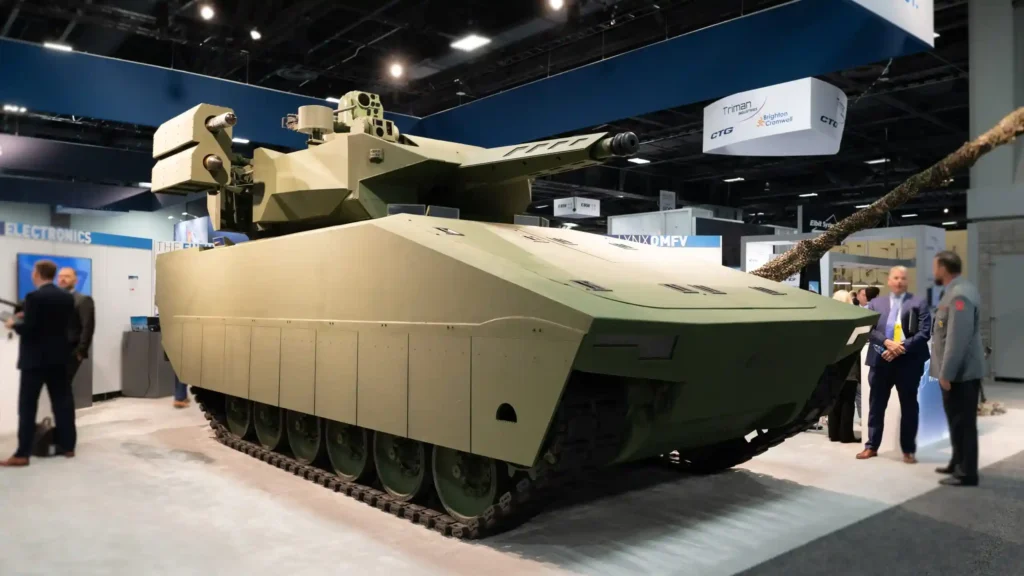
While the Bradley replacement is still in the planning stages, the next-generation vehicle is expected to focus on increased mobility, better protection, and improved automation and AI integration. The OMFV program is still in its early stages, with prototypes and design proposals being tested.
The challenge for the Bradley replacement will be to ensure that the next vehicle can offer the same level of protection and firepower while being more cost-effective and easier to maintain. Additionally, any replacement will need to be capable of operating alongside modern tank and reconnaissance platforms, maintaining the Bradley Fighting Vehicle’s role in mechanized infantry operations.
Maintaining the Bradley Fighting Vehicle is no small task. Due to its complexity and age, regular maintenance and upgrades are essential to keep it operational. The Bradley Fighting Vehicle System Maintainer plays a critical role in ensuring the vehicle stays in top condition.
A Bradley Fighting Vehicle System Maintainer is responsible for troubleshooting, repairing, and maintaining the various systems within the Bradley Fighting Vehicle. This includes everything from the engine to the TOW missile system, armor, and weaponry.
These professionals perform routine checks, ensure that the vehicle’s systems are functioning properly, and carry out repairs when necessary. Given Bradley’s age and the importance of keeping it operational in combat, this job requires specialized training and expertise.
The Bradley Fighting Vehicle has been a staple of the U.S. Army for decades, proving its worth in numerous conflicts and evolving to meet modern combat requirements. Whether it’s the M2 Bradley, the M3 Bradley, or the newer M2A3 Bradley, this vehicle continues to provide invaluable support to infantry, cavalry, and armored units alike.
The Bradley Fighting Vehicle’s unique combination of firepower, armor, and mobility allows it to perform a wide range of roles, from troop transport to reconnaissance and direct engagement with enemy forces. The Bradley remains a critical part of the U.S. military’s mechanized units and is expected to remain in service for years to come, with continued upgrades to keep it relevant in modern warfare.
As the Bradley Fighting Vehicle nears the end of its service life, the Bradley replacement discussions continue, but its legacy as one of the most effective IFVs in modern history remains undisputed. Whether you’re looking at the M2 Bradley, the M3 Bradley, or the future of infantry fighting vehicles, the Bradley is sure to continue influencing military vehicle design for generations.
Share
Defense Feeds is publication focusing on informing, engaging, and empowering the world by providing accurate information from defense technology.
Powered by Defense Feeds © 2025 – All rights reserved.